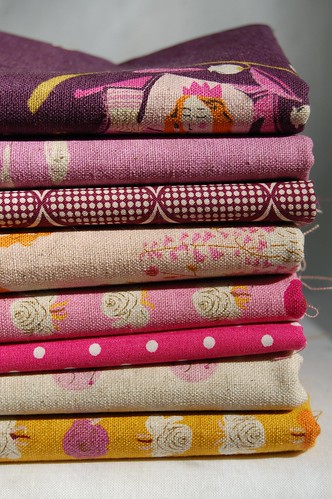What Did Real Hippies Wear
Throughout history, certain groups have crafted unique identities through a distinct way of dressing. This movement, characterized by its colorful garments and eclectic accessories, emerged as a strong statement against mainstream norms. Individuals embraced diverse influences, blending vintage pieces with artisanal creations, resulting in an unforgettable aesthetic that continues to inspire.
Bold choices in clothing play a crucial role in expressing one’s beliefs and values. Rather than adhering to conventional styles, this subculture champions self-expression and individuality. Fabrics like tie-dye, crochet, and denim dominate wardrobes, showcasing a commitment to craftsmanship as well as sustainability.
Jewelry crafted from natural materials, such as feathers and beads, enhances the overall look, adding a touch of bohemian flair. Footwear choices often reflect practicality paired with artistic flair, while vibrant colors and patterns serve as a celebratory nod to life. This approach to clothing not only reflects personal style but also a deeper connection to a way of life, making it a powerful symbol of freedom and creativity.
Authenticity and Values of the Hippie Movement
The essence of this cultural phenomenon lies in its deep-rooted principles and commitment to a lifestyle that transcended materialism. By embracing ideals centered around unity, peace, and love, individuals sought to create a society more attuned to human feelings and social bonds. This movement offered an alternative vision, encouraging followers to celebrate individuality while fostering connections with others.
Environmental consciousness played a pivotal role in shaping beliefs. Advocates emphasized the importance of living harmoniously with nature, promoting sustainable practices that respected the Earth’s resources. This reverence for the environment sprang from a desire to combat societal negligence and to inspire future generations to cherish and protect the planet.
Additionally, non-conformity served as a guiding principle, challenging conventional norms and expectations. Participants valued self-expression through art, music, and free thought, often rejecting material success in favor of personal fulfillment. This rejection of societal standards paved the way for a rich tapestry of creativity and alternative lifestyles that celebrated diversity and authenticity.
The focus on community was integral, as individuals recognized the strength found in solidarity. By cultivating a sense of belonging, they aimed to dismantle barriers that divided society, creating spaces where empathy and mutual respect thrived. This collective spirit fostered a unique culture that prioritized shared experiences over individual gain.
Key Elements of Hippie Fashion Trends
In the realm of countercultural expression, certain distinctive features define a vibrant aesthetic. This aesthetic intertwines with ideals of peace, love, and freedom, emerging as a powerful statement against conformity. Various components coalesce to create a unique look that resonates with a spirit of individuality and creativity.
Iconic Components
Various elements contribute to this colorful expression, showcasing a blend of nature, art, and social consciousness. From materials to stylistic choices, each aspect plays a vital role in crafting a complete ensemble.
| Element | Description |
|---|---|
| Flowing Fabrics | Lightweight, breathable materials like cotton and linen often in loose cuts. |
| Earthy Colors | Warm tones inspired by nature, such as browns, greens, and deep yellows. |
| Unique Prints | Bold patterns, tie-dye effects, floral designs, and other eye-catching visuals. |
| Accessories | Statement jewelry, handmade crafts, headbands, and bags with symbolic representations. |
| Footwear | Comfortable options like sandals, clogs, and barefoot style shoes. |
Influential Apparel Choices
This movement also embraces specific garments that symbolize an era marked by liberation. These choices often reflect a dedication to sustainability and ethical consumption, making them timeless in both relevance and appeal.
Iconic Accessories That Define the Style
Accessories play a pivotal role in shaping a unique look, showcasing individualism and creativity. These statement pieces not only enhance outfits but also serve as symbols of a movement characterized by free-spirited values and a connection to nature.
Jewelry That Speaks Volumes
Beaded necklaces, topaz rings, and bracelets made from natural materials highlight a distinct appreciation for handcrafted artistry. Often layered or stacked, these adornments tell stories of personal experiences and cultural influences. Wood, stones, and shells are frequently incorporated, emphasizing a bond with the earth and its elements.
Footwear That Makes a Statement
Sandals, particularly those crafted from leather or fabric, offer a comfortable yet stylish option for movement and exploration. Fringe boots and clogs add flair and individuality while ensuring practicality. Footwear in earthy tones and unique designs reflects a harmonious connection with surroundings.
Influential Musicians and Their Impact
Throughout history, certain artists have left an indelible mark on culture, shaping societal norms and values through their creative expressions. These individuals have transcended mere entertainment, becoming powerful symbols of change and inspiration for generations. Their contributions have not only influenced music but have also sparked movements that resonate beyond their immediate impact.
Musicians have often served as catalysts for social awareness, using their platforms to advocate for causes they believe in. By blending their personal experiences with broader societal issues, they have inspired audiences to reflect, engage, and act. This multifaceted influence highlights the profound relationship between art and society, showcasing how melodies and lyrics can provoke thought and foster change.
The collective energy of these artists has fostered a spirit of community, encouraging listeners to embrace individuality while promoting unity. Through their innovative sounds and fearless messages, they have shaped cultural landscapes, making a lasting impression on many aspects of life, from fashion to activism.
Colorful Fabrics and Patterns in Hippie Wear
Vibrant textiles and bold motifs play a pivotal role in this expressive clothing genre. Emphasizing individuality, these garments often feature an array of hues and designs that evoke a sense of freedom and creativity. Bright colors intertwine with intricate patterns, creating a visual feast that resonates with the spirit of adventure and nonconformity.
Floral prints, tie-dye, and geometric shapes dominate this colorful realm, allowing wearers to showcase their personality through what they don. These elements not only reflect a carefree attitude but also symbolize a deeper connection to nature and harmony. Many fabrics are sourced from sustainable materials, further enhancing the link to a lifestyle focused on environmental consciousness.
In addition to traditional prints, hand-stitched embellishments and artisanal techniques add a unique touch to each piece. This attention to detail highlights craftsmanship, inviting others to appreciate the artistry behind every garment. As a result, clothing transforms into a canvas for self-expression, enabling individuals to communicate their values and beliefs through vibrant aesthetics.
Modern Adaptations of Hippie Aesthetics
Recent trends have embraced elements from a vibrant subculture, infusing contemporary looks with a retro spirit. This blend of old and new exemplifies how timeless principles of free expression and individualism can be revitalized in today’s wardrobes. Artists and fashion enthusiasts alike are reinterpreting classic motifs, making way for a refreshing take on beloved characteristics.
Flowing silhouettes and earthy tones have resurfaced, allowing individuals to express their personality without compromising comfort. Utilitarian pieces crafted from organic materials appeal to a generation increasingly conscious of sustainability. Enhanced by handcrafted accessories, these ensembles showcase creativity while promoting an ethical lifestyle.
Additionally, patterns such as florals and tie-dye are making a comeback, often paired with modern tailoring to create a harmonious juxtaposition of styles. The revival of bohemian influences is also prominent in streetwear, with oversized garments championing a laid-back and casual vibe. This new wave embraces diversity, inviting everyone to incorporate a piece of this legacy into their daily attire.
Q&A: What did real hippies wear?
What were the key elements of hippie style in the 1960s and 1970s?
Hippie style in the 1960s and 1970s was characterized by loose, comfortable clothing, often made from natural fibers like cotton. Popular items included bell-bottom jeans, peasant blouses, tie-dyed shirts, and suede vests. Accessories like peace signs, long hair, and handmade jewelry were also common.
How did the anti-war movement influence hippie culture and fashion?
The anti-war movement, especially opposition to the Vietnam War, played a significant role in shaping hippie culture and fashion. Many hippies embraced symbols of peace, such as the peace sign, and wore anti-establishment clothing like flared jeans and tie-dye shirts to express their beliefs in love, peace, and freedom.
What was the significance of Woodstock in hippie culture and clothing?
Woodstock, the iconic music festival held in 1969, symbolized the height of the hippie movement. Many young people attending the festival dressed in typical hippie clothing like tie-dyed shirts, suede vests, and bell-bottom jeans. Woodstock embodied the hippie ethos of freedom, music, and love, influencing mainstream fashion.
How did peasant blouses become part of hippie clothing in the late 1960s?
Peasant blouses became a staple of hippie clothing in the late 1960s due to their loose fit and association with traditional, handmade fashion. Hippies embraced this style as a rejection of mainstream, structured clothing, opting for more comfortable and natural fabrics that aligned with their anti-consumerist beliefs.
Why were tie-dyed clothes so popular with hippies?
Tie-dyed clothes became popular with hippies because they represented individuality, creativity, and freedom. The psychedelic colors and unique patterns of tie-dye reflected the hippie emphasis on self-expression and non-conformity, as well as their connection to the counterculture and the youth movement.
How did the fashion industry respond to the rise of hippie style?
The fashion industry began incorporating elements of hippie style into mainstream fashion by the late 1960s and 1970s. Designers started embracing natural fibers, loose silhouettes, and bohemian aesthetics. Hippie-inspired items like bell-bottom jeans, maxi dresses, and embroidered denim jackets became fashionable worldwide.
What was the role of handmade clothing and accessories in hippie fashion?
Handmade clothing and accessories were central to hippie fashion, as they reflected the movement’s rejection of mass-produced, consumer-driven fashion. Many hippies wore handmade items like embroidered denim jackets, suede vests, and tie-dye shirts to express their individuality and align with the hippie ethos of creativity and self-sufficiency.
What role did music festivals like Woodstock play in shaping 60s hippie fashion?
Music festivals like Woodstock became cultural epicenters for 60s hippie fashion, showcasing iconic looks such as maxi dresses, suede vests, and moccasins. These festivals allowed hippies to express their free-spirited lifestyle, and the fashion world quickly adopted these trends into mainstream clothing.
How did the peace sign become a symbol of hippie culture and clothing?
The peace sign became one of the most recognizable symbols of hippie culture, often appearing on clothing, accessories, and protest signs. It represented the hippie commitment to peace, love, and opposition to the Vietnam War, making it a central motif in 60s hippie fashion.
What impact does 60s hippie fashion have on modern fashion today?
60s hippie fashion continues to influence modern fashion through bohemian styles, flared jeans, and natural fabrics. Many modern fashion designers draw inspiration from the hippie aesthetic, incorporating elements like tie-dye, maxi dresses, and denim into their collections, keeping the spirit of the 60s alive in contemporary clothing choices.


